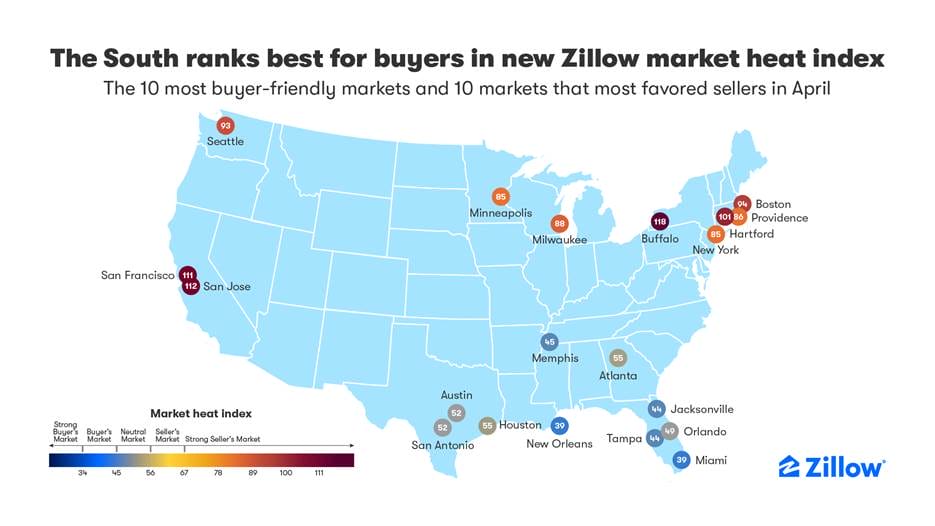Texas and Florida metros dominate the best places for buyers in Zillow’s new market heat index, securing seven of the top 10 spots. But most of the country’s 50 largest metros — and the U.S. at large — favor sellers, according to the latest market report from Zillow. And sellers have a slight edge in Phoenix housing market, Zillow’s new index shows.
LEARN MORE: Ranking Arizona: Top 10 real estate agents for 2024
The index shows Metro Phoenix is in favor of sellers, although buyers are seeing price cuts on more than a third of Zillow listings. On Zillow’s dashboard page, you can see the wild ride the Phoenix housing market has taken over the past few years.
Phoenix housing market numbers
Here are some other key stats for Phoenix housing market buyers and sellers:
- Typical home values are $461,258, up 4.6% since last year.
- 34% of listings on Zillow had their price cut in April – the second highest rate among major markets, and price cuts are far more common than last year.
- Buyers have more options to choose from than last year – total inventory is up 4% annually.
- More sellers are joining the market – new listings are up 20% year over year.
“Prospective buyers in most markets today are feeling less intense competition than in recent spring shopping seasons. Pressure is easing up as mortgage rates raise costs and sellers return,” said Skylar Olsen, Zillow chief economist. “However, the pool of homes for sale remains remarkably low. This means the nation remains a seller’s market despite high mortgage rates — homes are selling faster, with more buyer interest over any one listing, than pre-pandemic.”

Strong construction in Texas and Florida has helped restore inventory levels in those states, easing competition. Austin and San Antonio are two of just three markets with more inventory now than before the pandemic, while Tampa, Orlando and Jacksonville have among the smallest deficits.
he top market for sellers is Buffalo, New York, forecast by Zillow in January as the hottest market of 2024. Among the top metros for sellers are more expensive (and inventory-constrained) coastal tech hubs, relatively affordable spillover markets in the Northeast — Hartford and Providence — and hot Upper Midwest metros Milwaukee and Minneapolis.
Zillow’s new market heat index visually represents buyers’ urgency or sellers’ confidence in an area and shows how that’s changed over time. It takes into account the share of homes that sell quickly, the share of homes with a price cut, and buyer engagement with active Zillow listings in a market.
Springtime competition coasts as costs and inventory rise
Both inventory and new listings posted solid gains monthly and compared to last year. Buyers had a lot more options to choose from, as inventory rose 6.4% from March to April and climbed 18% over last year, the second-largest annual increase since at least 2019. They also had more fresh options, with new listings up nearly 11% month over month and rising almost 16% year over year. Despite April’s improvement, total inventory sits 36% below pre-pandemic norms.
Mortgage rates that spiked above 7% for the first time this year, along with these infusions of inventory, held competition steady at a time of year when it normally ramps up.
U.S. home values grew 1.2% from March to April and are 4.4% higher than a year ago. That’s a slight slowdown from 4.6% annual growth seen last month. The typical U.S. home is now worth $359,402.
The share of listings with a price cut reached 22.4% in April, the highest rate for April in the past six years and a significant step up from 17.2% last year. Price cuts can be a sign of weakening demand that foretells softer price growth ahead, or they can be a natural process of feeling the market out as sellers and their agents come up with their pricing strategy. The latter scenario becomes more likely in a rapidly changing market like we see today, with relatively few recent sales to look at as comps.
Homes that sold in April sold in 13 days, which is fast by historical standards. However, that is three days slower than last April, the first time since June 2023 that the speed of sales fell behind the previous year’s pace.




